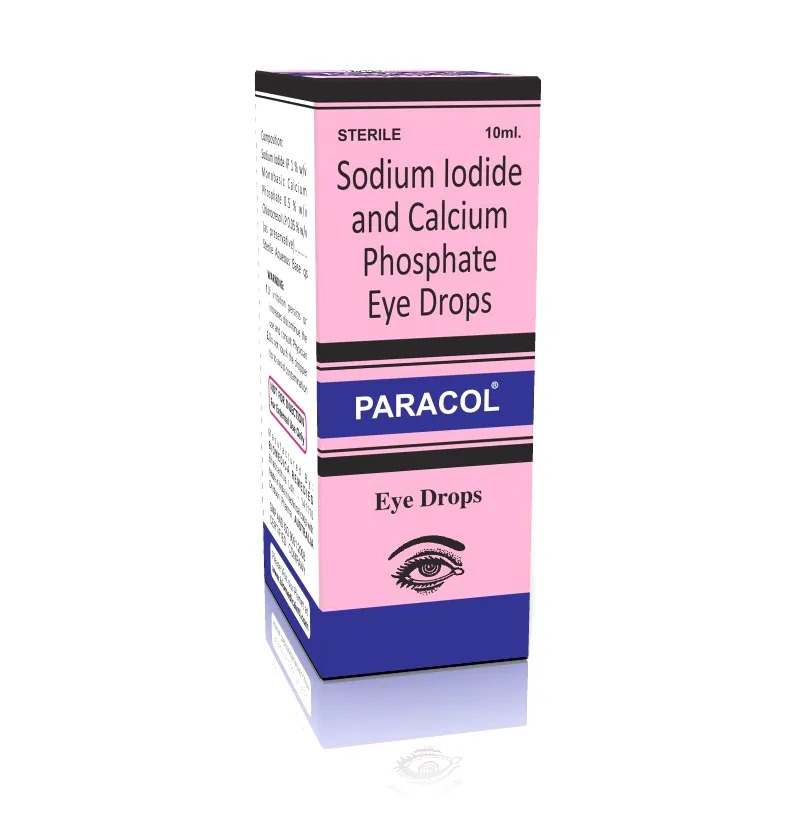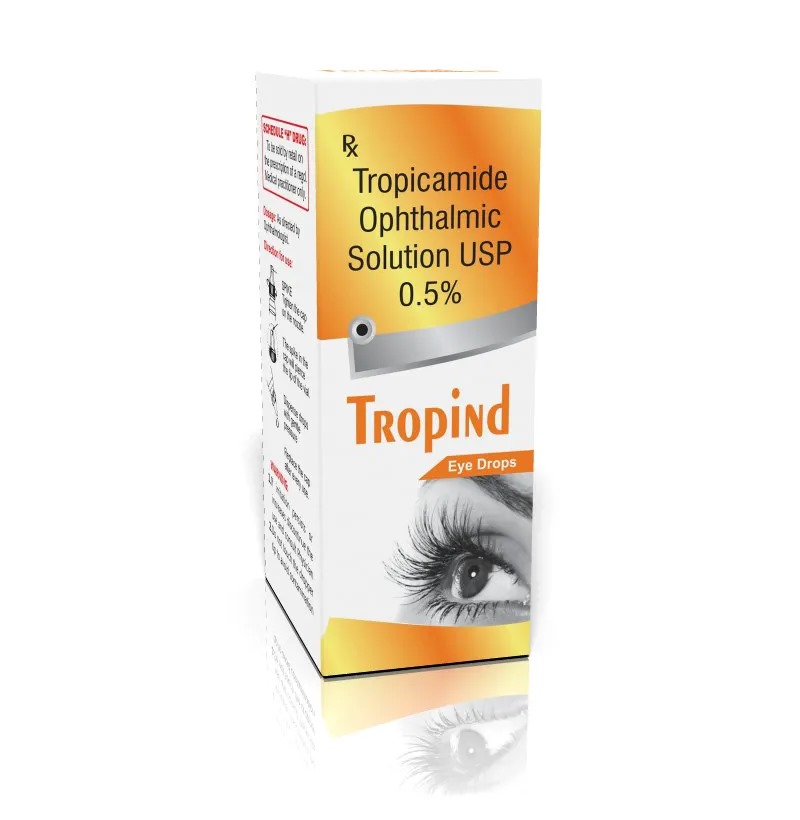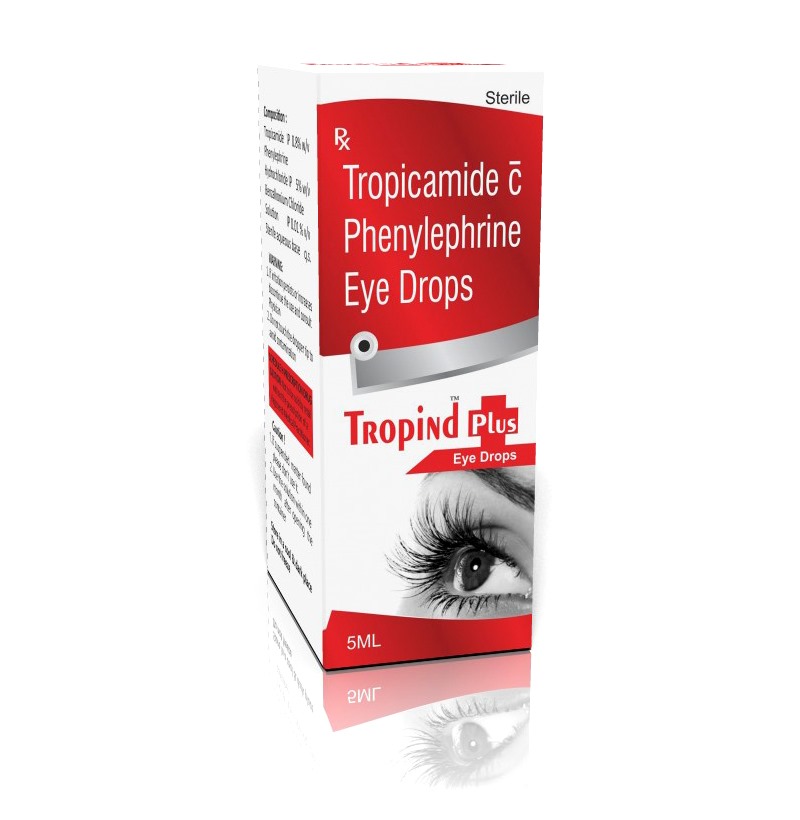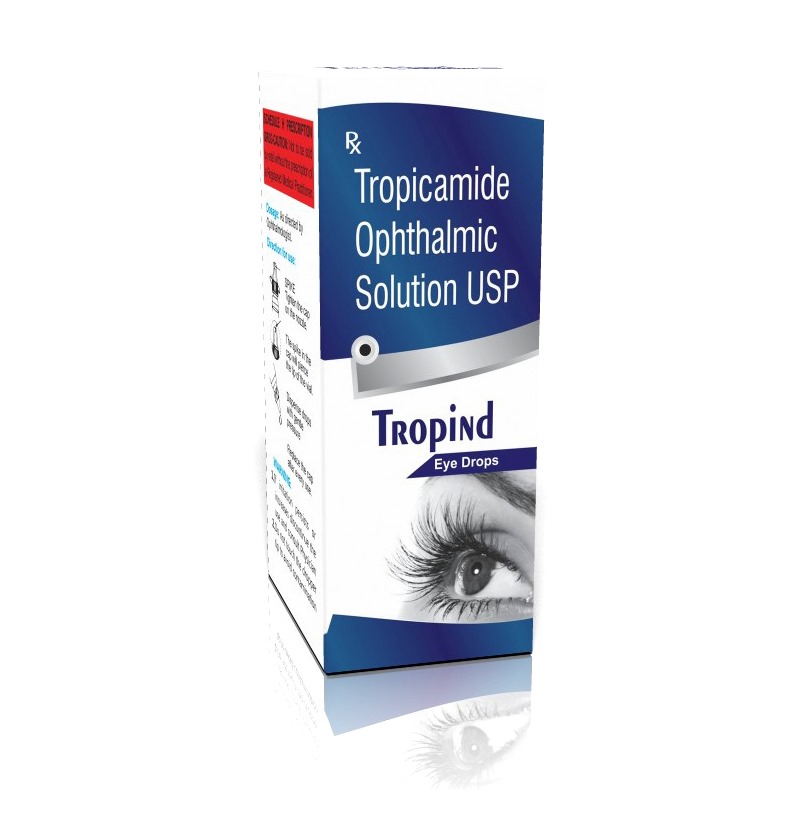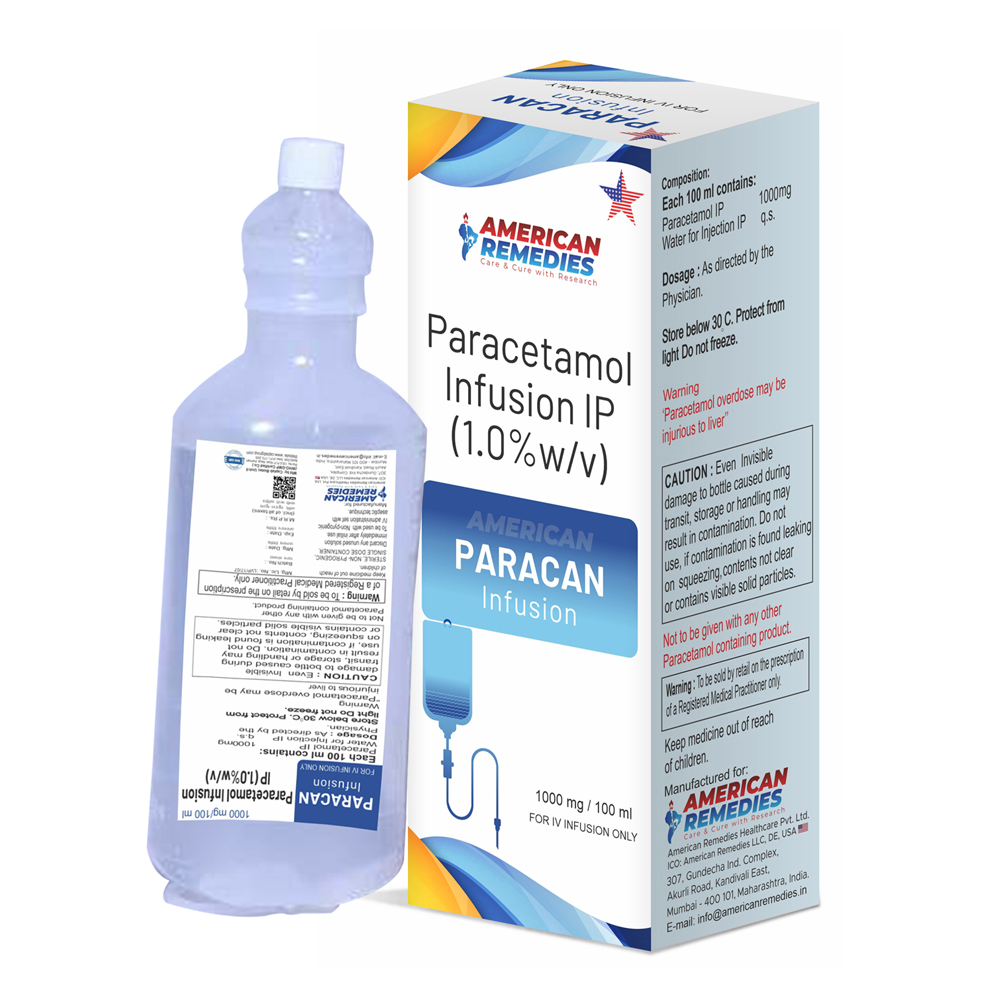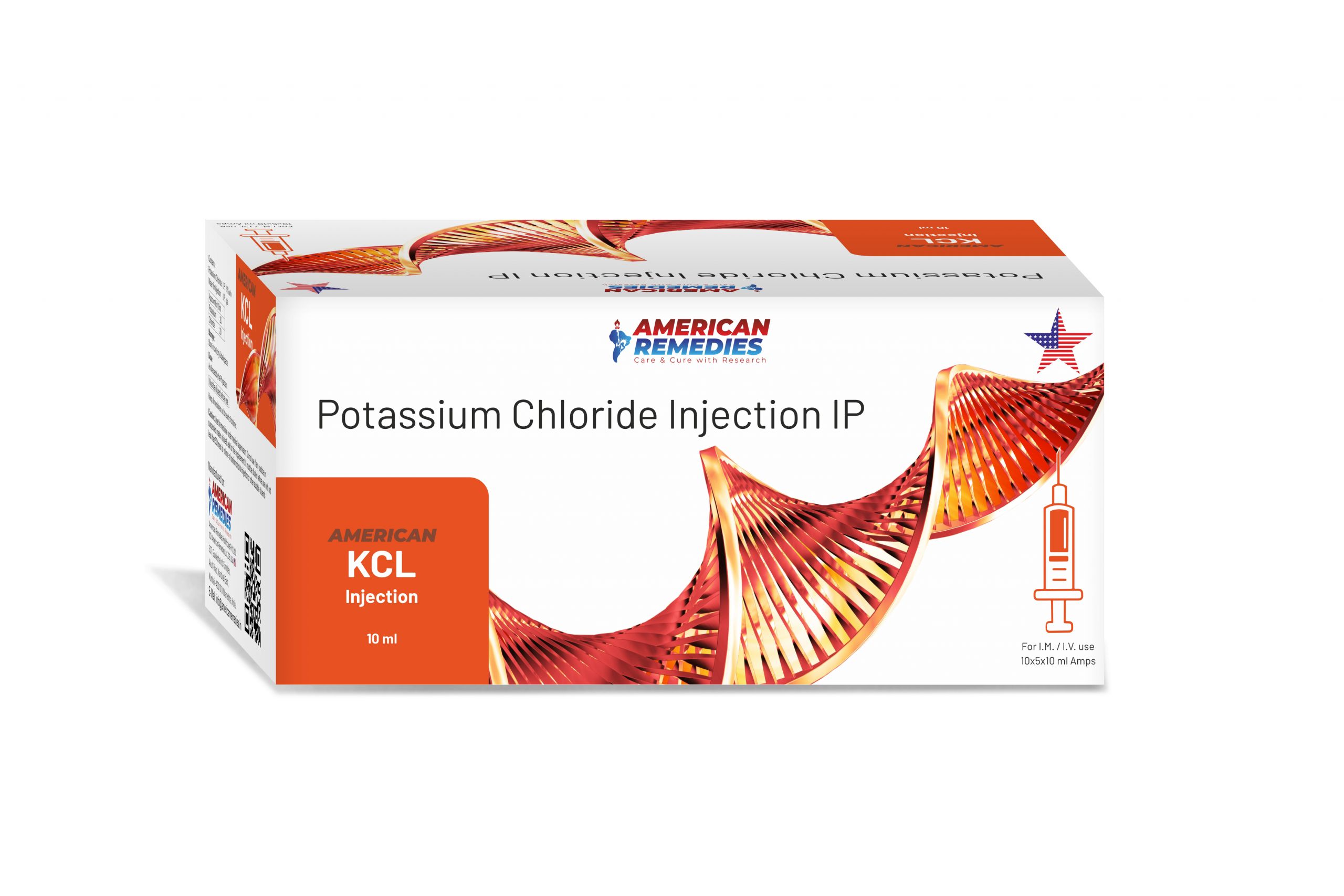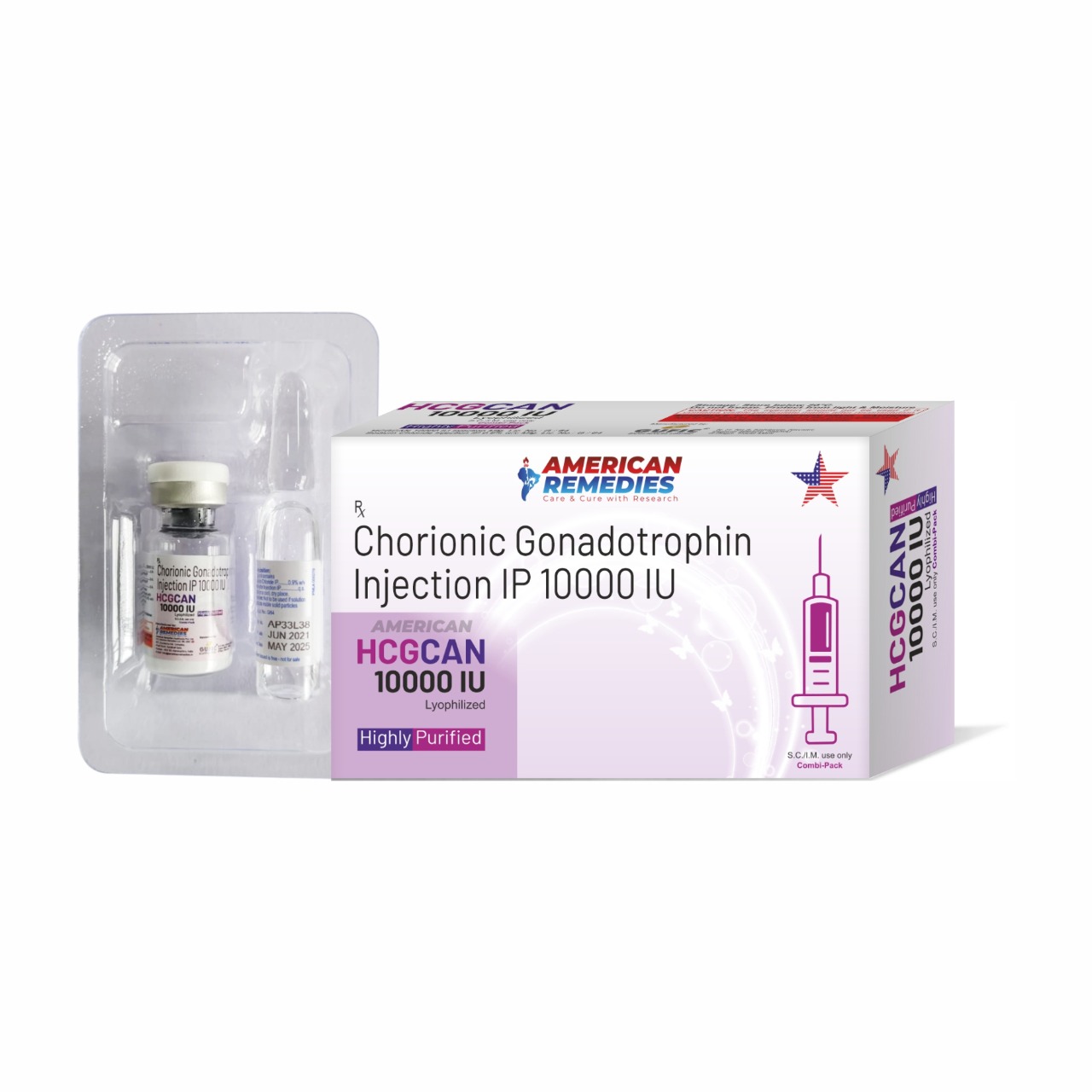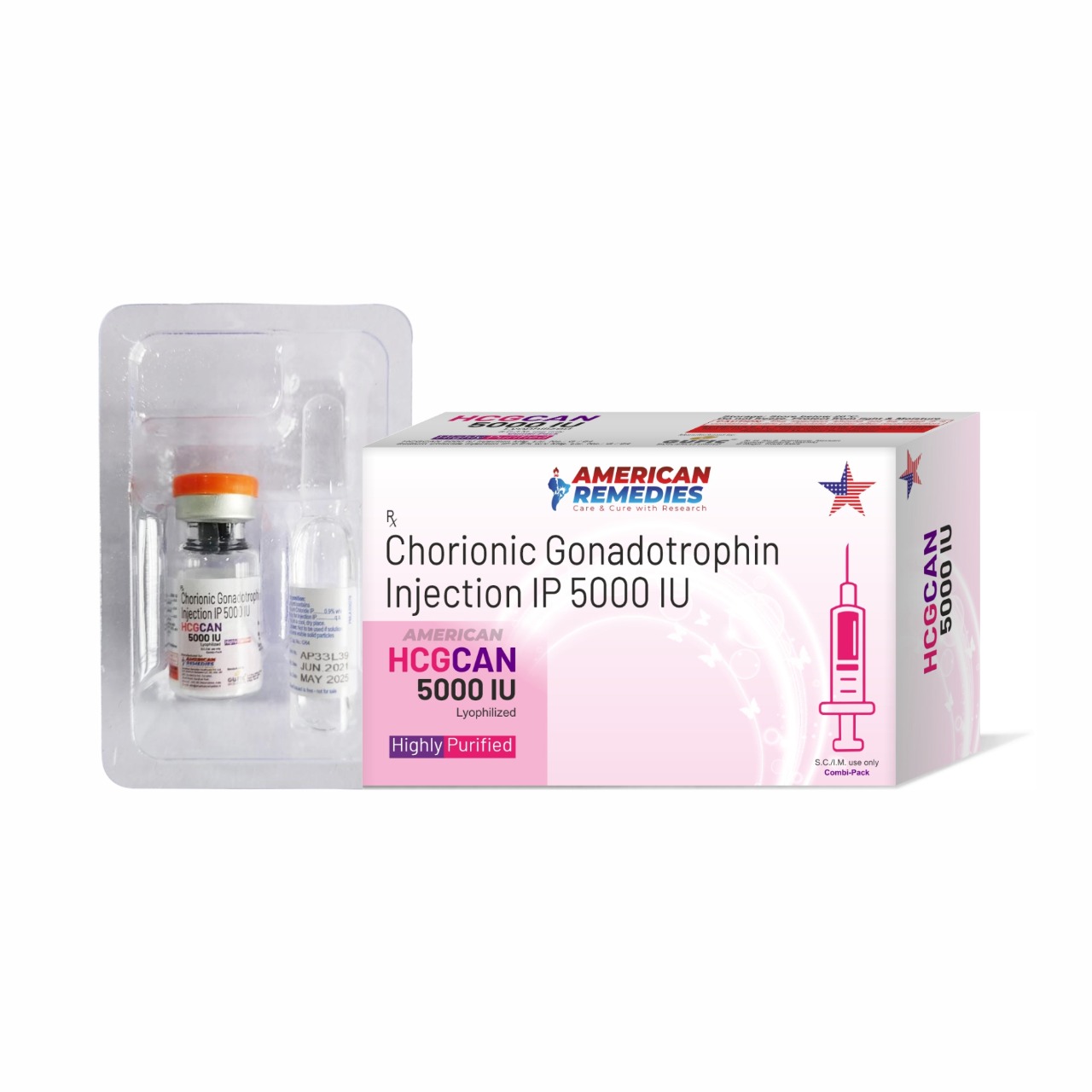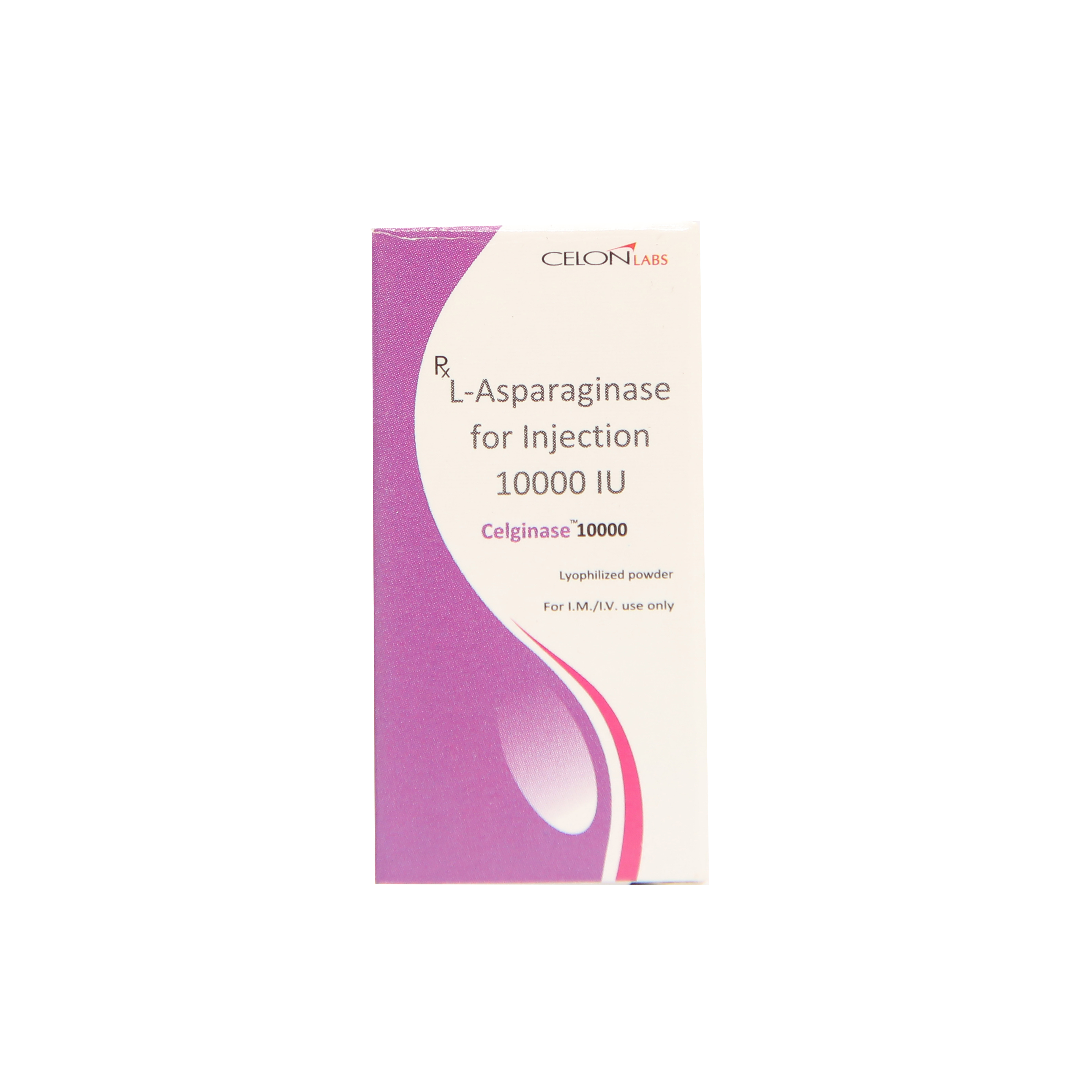Paracol Eye Drop is a combination ophthalmic solution containing Calcium Phosphate (0.5% w/v) and Sodium Iodide (1% w/v). It is primarily used for the treatment and prevention of cataracts, a condition where the eye's lens becomes cloudy, leading to impaired vision. ________________________________________ 🔍 Uses • Cataract Treatment and Prevention: Paracol Eye Drop is utilized to treat existing cataracts and to prevent further formation of cataracts in the future. ________________________________________ 💧 Dosage and Administration • Typical Dosage: Instill 1 or 2 drops into the affected eye(s) every 3 or 4 hours, or as directed by your physician. Application Method: 1. Wash your hands thoroughly before use. 2. Hold the dropper close to the eye without touching it. 3. Gently squeeze the dropper to instill the prescribed number of drops into the lower eyelid. 4. Wipe off any excess liquid. ________________________________________ ⚠️ Side Effects and Precautions • Common Side Effects: o Burning, stinging, or irritation at the application site. • Temporary blurred vision. • Precautions: o Consult your doctor before use if you are pregnant or breastfeeding. o Avoid driving or operating heavy machinery immediately after application if you experience blurred vision. o Do not touch the dropper tip to any surface to prevent contamination.
Send Message